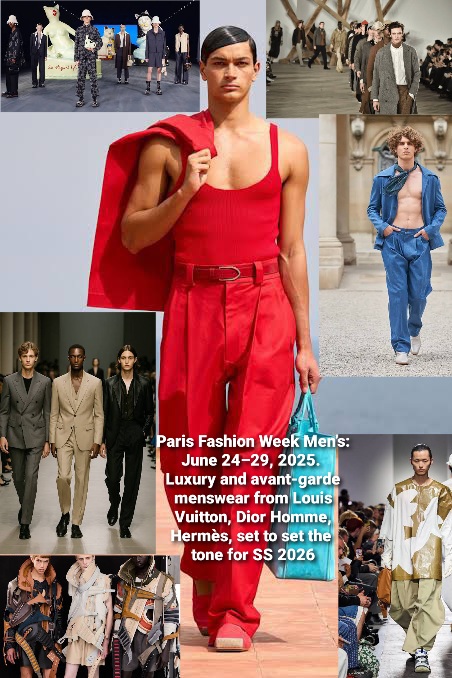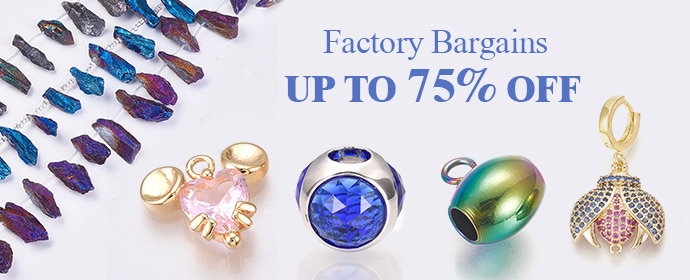Ah! Paris in the last week of June 2025. The Seine is gently flowing through the City of Light, yet the streets are buzzing with the bright flashes of cameras, fashion editors in a hurry, and the quiet tread of custom-made sneakers. Welcome to Paris Fashion Week Men’s Spring/Summer 2026, a whole week dedicated to cutting-edge fashion, but with a nod to classic elegance.
This isn’t just about showing off new styles. It’s truly a cultural moment. It’s about reimagining what it means to be masculine, how we think about sustainability, and what style can be, all brought to life by some of the world’s boldest designers. From Pharrell’s sleek, jet-set vision for Louis Vuitton, to Jonathan Anderson’s romantic revival of Dior Homme, and Hermès’ almost otherworldly take on minimalism, the Spring/Summer 2026 collection feels less like a typical season and more like a bold statement.
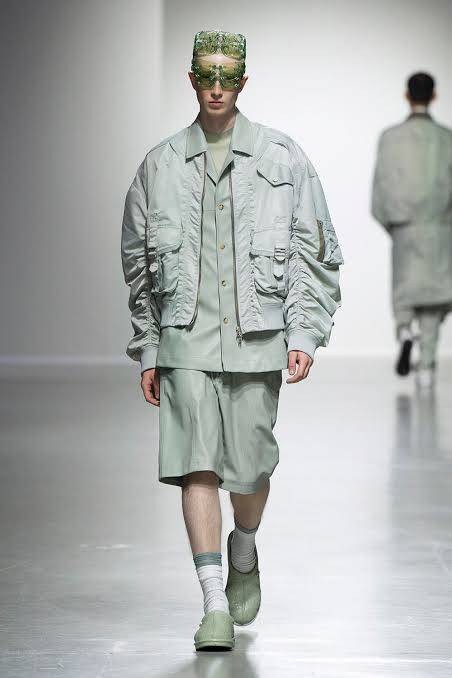
Photo credit: Fashion Week Online
 Louis Vuitton: Pharrell’s Global Flight Plan
Louis Vuitton: Pharrell’s Global Flight Plan
Pharrell Williams is really solidifying his transformation from a pop icon into a major creative force. His Spring/Summer 2026 line for Louis Vuitton was quite the spectacle, playing with the theme of flight in both its story and execution. You could see aviation influences everywhere, from bomber jackets adorned with embroidered maps to cargo suits in gentle pastels that seemed inspired by a luxury cabin on Mars.
It wasn’t just about getting from one place to another; it was more about movement, connecting the world, and blending cultures. The models carried LV suitcases that looked like classic flight cases, sported crystal-studded flight jackets, pearl-trimmed shorts, and sleeveless tunics featuring celestial navigation patterns. Pharrell’s Vuitton isn’t just a brand label; it feels like a journey around the globe.
We can expect the blokecore trend to get a bit softer and more polished in this collection: it remains sporty and casual, but now reimagined using cashmere and silk. The Louis Vuitton brand is truly taking off, and it’s never looked more perfectly at home in modern luxury.
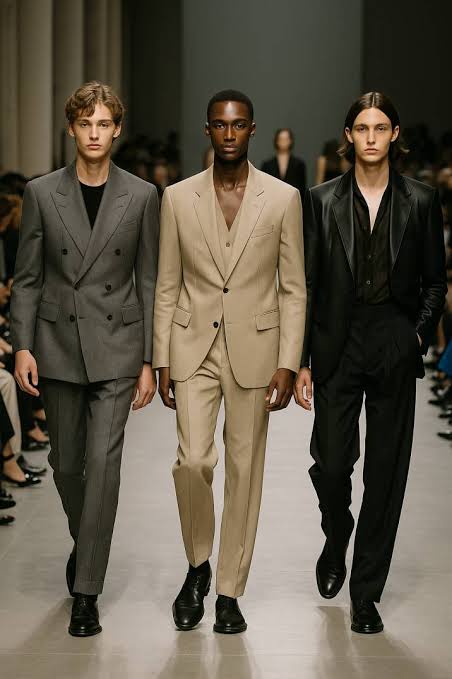
Photo credit: Voye Global eSIM
 Dior Homme: Enter Jonathan Anderson, Stage Left
Dior Homme: Enter Jonathan Anderson, Stage Left
When Kim Jones stepped down, the mantle at Dior Homme was huge, and Jonathan Anderson stepped into it with a bold move: ceramic soles. His debut as the brand’s menswear creative director was really something special, it felt both poetic and surprisingly intellectual. It was like watching a brilliant playwright take an old classic and give it a fresh twist, full of respect for the original, but also unafraid to put their own unique spin on it.
The clothes themselves had a lovely balance, and soft shapes that still felt well-structured. Lapels were jazzed up with hand-sculpted ceramic brooches, and tunics were made from mohair, featuring beautiful hand-knit floral patterns. One piece that really caught the eye was a modern take on the classic Bar jacket: it was tailored at the waist but then deliberately relaxed at the shoulders and cuffs, like shedding the weight of old-fashioned ideas about masculinity.
Anderson really focused on how things feel and look; the textures, the tones, everything. The color scheme felt like a gentle garden: soft lavender, mossy green, and cloudy beige. There were hints of femininity woven in, not as something that stood out in contrast, but as a natural, integral part of the design. It wasn’t about being androgynous; it was about feeling truly human.
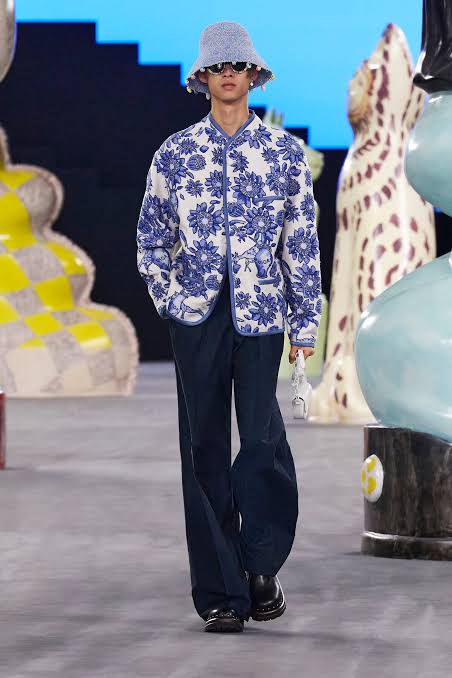
Photo credit: Dior
 Hermès: The Art of Whispering Luxury
Hermès: The Art of Whispering Luxury
Hermès has never needed to make a loud statement, and it still doesn’t. Véronique Nichanian’s SS26 collection was a beautiful reminder of why genuine luxury often communicates with a quiet elegance.
The designs drifted down the runway with a lightness, almost like they were floating: softly structured linen suits, almost invisible leather sandals, and outerwear that felt as gentle as a breath of fresh air. The fabrics; silk, delicate suede, and cotton gauze moved with the wearer as smoothly as a second skin. The color palette was inspired by the coast: oyster, lichen, seafoam, and the muted shade of pine shadow.
Still, don’t let the quiet feel fool you into thinking it’s simple. Every item held refined architectural details; a hidden pleat, a carefully placed blind hem, a pocket lining done by hand. At Hermès, comfort and exceptional craftsmanship come together, and in today’s world of constant hype and flashy displays, that quiet dedication feels truly revolutionary.
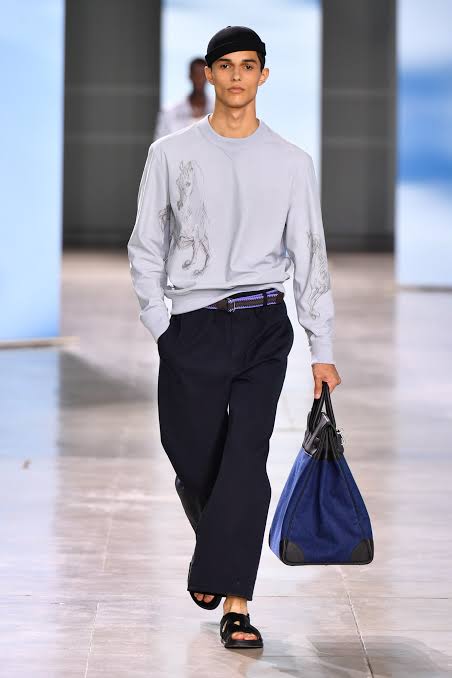
Photo credit: WWD
 Beyond the Big Three: The Avant-Garde Pulse
Beyond the Big Three: The Avant-Garde Pulse
So, while the big-name houses brought their usual grandeur and sophistication, the independent designers added a wonderful mix of controlled disorder and sharp clarity. This season just proved again that Paris isn’t merely the fashion capital; it’s truly the capital of fearless reinvention.
Rick Owens created a stunning post-apocalyptic dreamscape on the runway, using layers of shiny latex and dramatic, flowing cloaks.
Comme des Garçons Homme Plus mixed it up with edgy acid-wash suits alongside tailoring that featured raw, unfinished edges.
Wales Bonner offered up spiritual minimalism, showcasing crisp chalk-white robes, delicate open-weave shirts, and color palettes inspired by music.
Yohji Yamamoto filled the space with monochrome drama, blending a sense of deep poetry with flowing shapes that looked like ink brushstrokes.
Willy Chavarria brought back tailoring with a socio-political edge, weaving in Chicano culture with his designs – think billowy trousers, workwear-style shirts, and large, loose suits.
And we can’t skip Saint Laurent Homme, especially now that they’re fully back on the Paris schedule. Their show featured super sharp sleeveless jackets, lightweight shirts made of sheer chiffon, and pointed boots that felt right out of a movie. Under Anthony Vaccarello’s direction, Saint Laurent perfectly balanced power and sensuality, just the way Parisians do it.
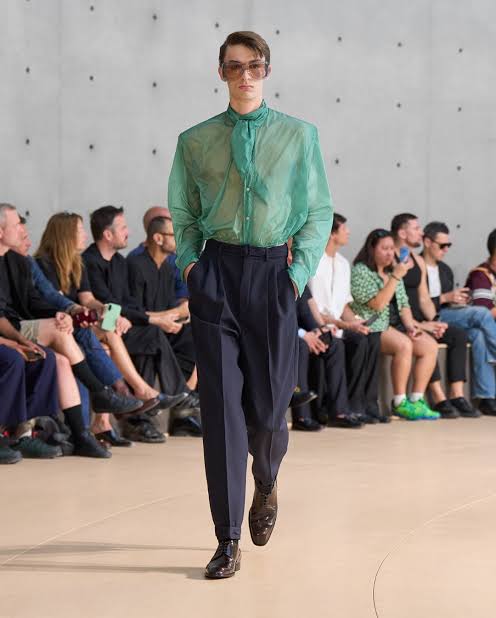
Photo credit: Instagram
 Sustainability Is Now Standard
Sustainability Is Now Standard
It seems that what used to be just a small detail has now become the main story: sustainability is front and center. This season, leading fashion houses really baked eco-friendliness right into their design approach. For example, Dior swapped out traditional silk linings for organic,undyed weaves. Hermès brought back leathers from their old stock and cleverly used scraps with almost invisible stitching. Independent labels like Auralee, Marine Serre, and Lemaire really showed off fully regenerative fabrics, clever modular patterns, and biodegradable fastenings.
You could even see this shift in the way shows were put on. Several brands ditched private jets in favor of digital presentations and virtual front rows. Paper invitations were replaced with high-tech NFC-enabled cards. And there were even climate-focused discussions alongside the collections, really hammering home just how deep these values have become in the luxury world.
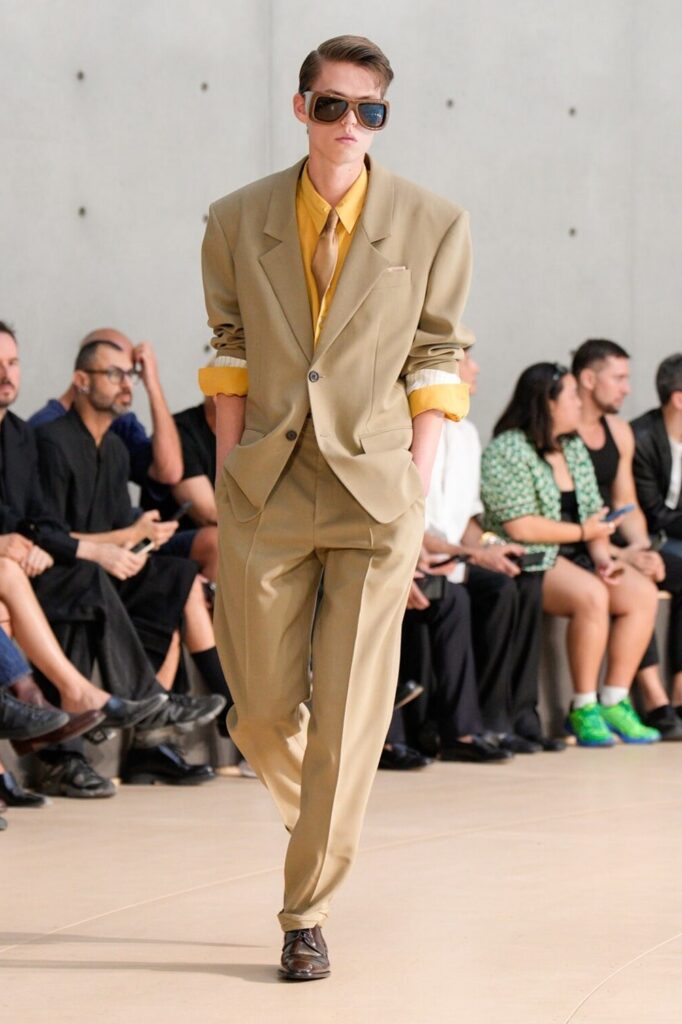
Photo credit: Twitter- X
 Frequently Asked Questions: What You Need to Know
Frequently Asked Questions: What You Need to Know
Q1: What exactly is “blokecore,” and why does it matter now?
Ans: Blokecore is a fashion trend that emerged from a love of old-school sportswear like football jerseys, tracksuits, and pub wear. Designer Pharrell gave it a high-fashion twist for Louis Vuitton, keeping the sporty vibe but elevating it with luxurious touches like silk, pearls, and pastel colors.
Q2: How does Jonathan Anderson’s Dior differ from Kim Jones’?
Ans: While Kim Jones often embraced streetwear-inspired tailoring at Dior, Jonathan Anderson brings a more artistic touch. His designs feature softer shapes, unique textures, and bold sculptural accessories that really break from the ordinary.
Q3: What color stories dominated the week?
Ans: This season, there’s a shift away from bright neon hues. Instead, it’s all about subtle, understated colors. Think misty blue, dusty lavender, soft terra blush, and muted oyster grey. These aren’t just trends; they’re meant to evoke feelings and moods.
Q4: Has luxury finally let go of loud branding?
Ans: Definitely. The big, bold logos are fading out, and the focus is shifting to the story behind the brand. We’re moving into an era where luxury is about the experience and the feel of the product, not just about showing off flashy labels.
Q5: Are emerging designers making real impact now?
Ans: Absolutely, more than ever before. The fresh ideas coming from independent designers are actually influencing the established fashion houses. In Paris, the new generation isn’t waiting for an invitation—they’re stepping up and creating their own space in the industry.
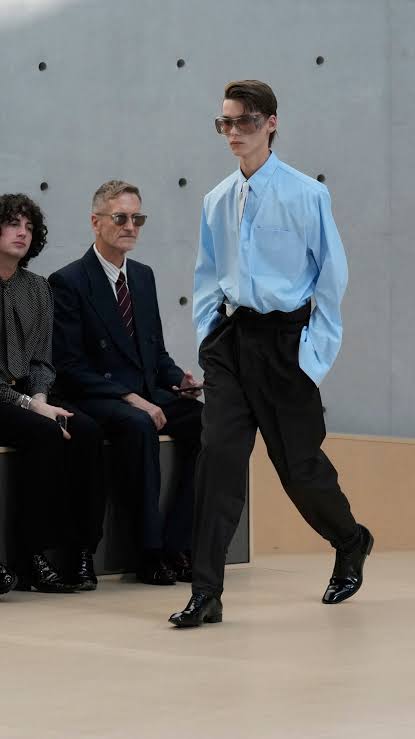
Photo credit: FOX8 WGHP
 Final Take: Paris Threads the Needle Between Past and Possible
Final Take: Paris Threads the Needle Between Past and Possible
Paris Men’s Fashion Week SS26 isn’t just about the shows; it felt like a mirror, showing us how people are starting to dress as we move into the next phase of our world.
We’re seeing the old rules fade away; the strict binaries, the bold showmanship. Instead, a fresh kind of masculinity is taking shape: it’s gentle, considered, multi-layered, and worldwide. Designers are using detailed tailoring, eco-friendly methods, and styles that blur gender lines to suggest a future where fashion isn’t just about mirroring culture, but actively shaping it.
Whether it is the quiet confidence at Hermès, the grand drama of Dior, Louis Vuitton’s sky-high visions, or the subtle cultural observations woven into the independent labels, Paris in June was more than just stylish. It is truly fearless.
And if this is any indication, that’s the look that’s really going to define 2026.
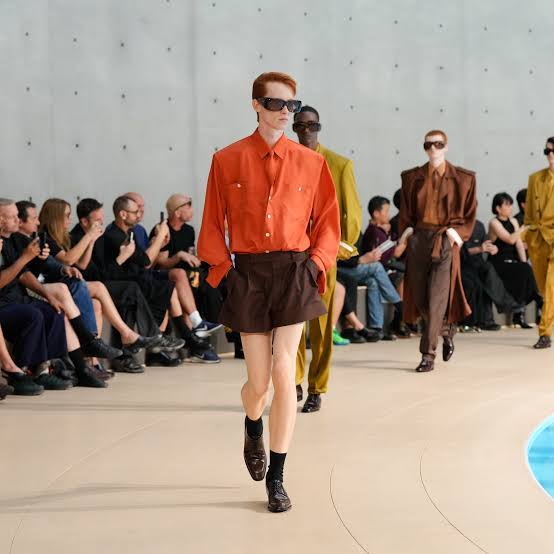

Photo credit: GQ
Blog Author: Raja Bahar Khan Soomro

Cruise 2026 Runway Season: Chanel, Gucci, Dior Lead the Global Resort Fashion Revolution
Top Menswear Trends from London Fashion Week Men’s SS26: What to Wear Next Season
Pitti Uomo 2025: Top Menswear Trends to Watch from Florence’s Iconic
Recommend0 recommendationsPublished in apparel, celebrity fashion, Our Fashion Passion, Petite, Plus Size, Pop Fashion, street style, Uncategorized
